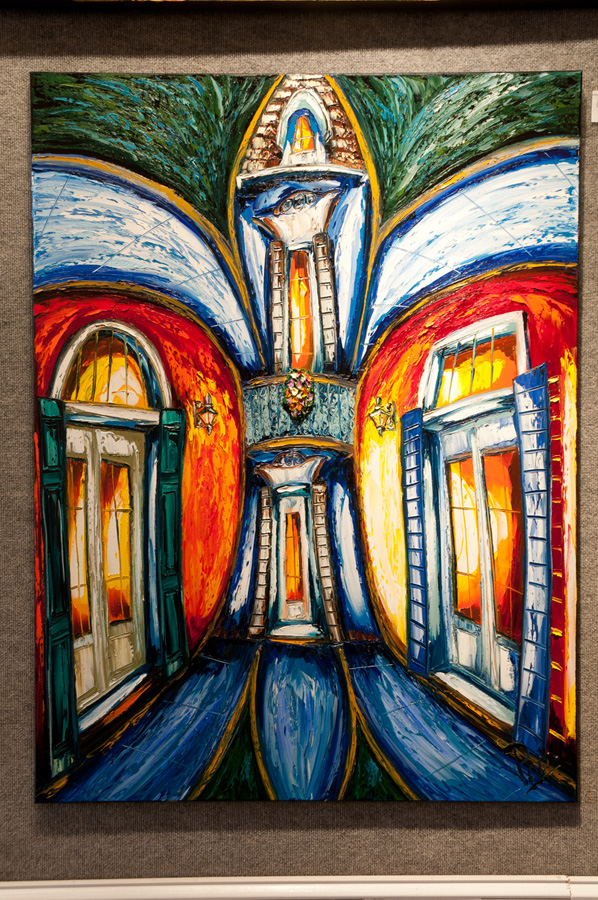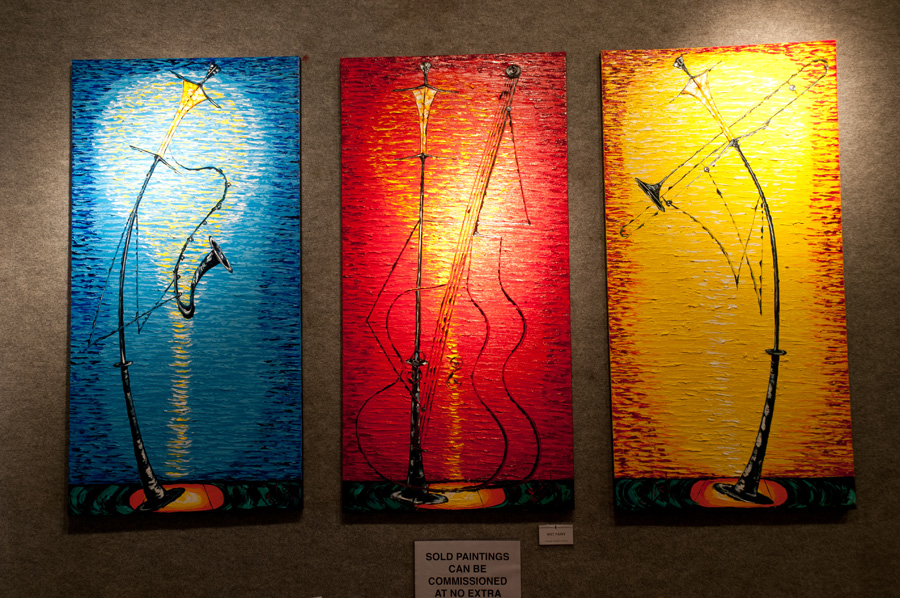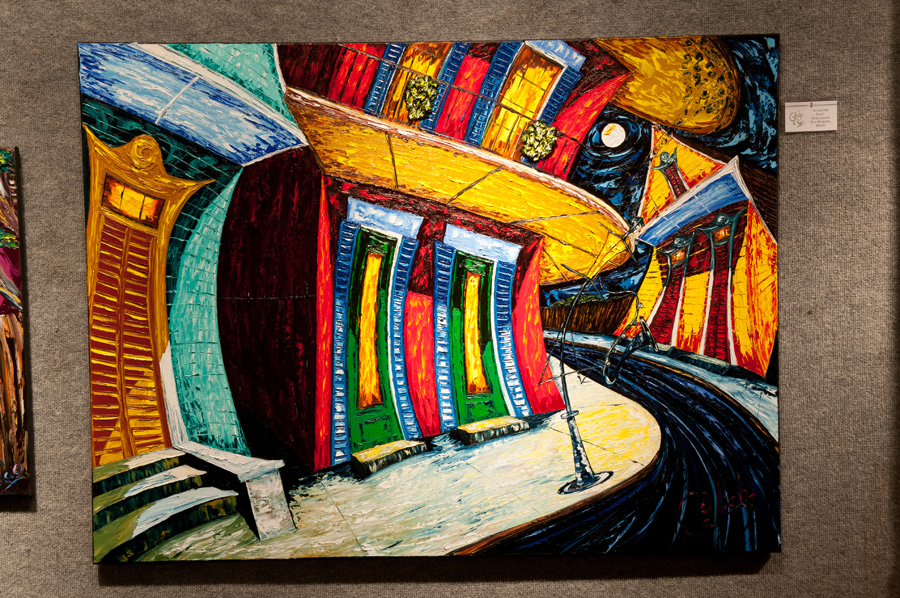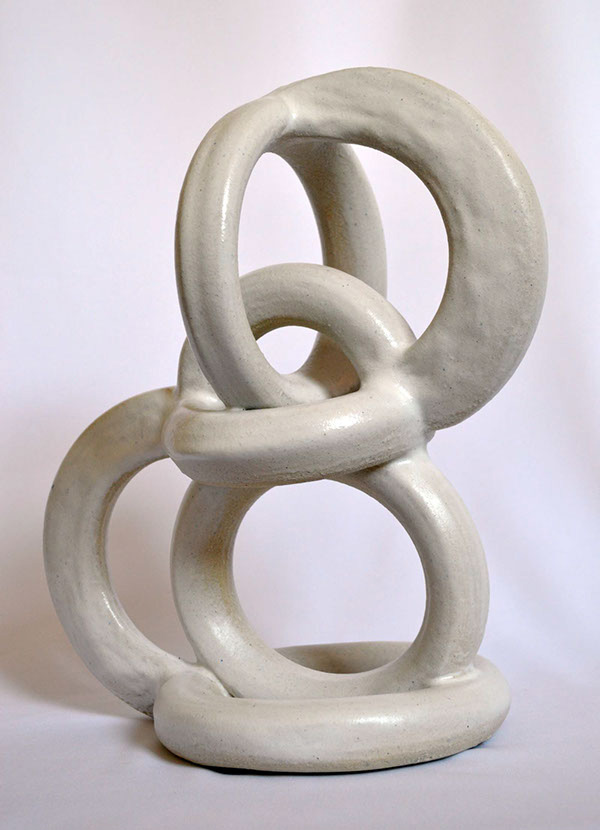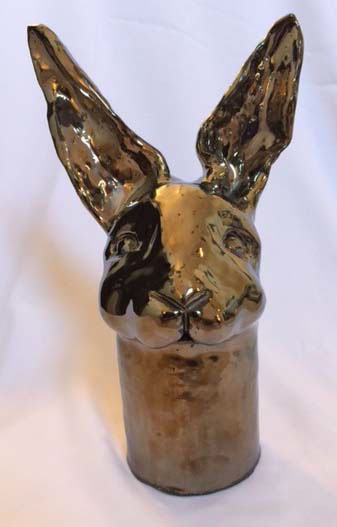February 05, 2015
When I was young, my mother filled our house with music. We would sing all the time, neither of us with any kind of real success. I specifically remember singing "Rhinestone Cowboy" riding in our car when radios were still dial tuned and before seat belts were "fashionable" . As festival season approaches, no time in the French Quarter is more filled with the sounds of music. We come out of the cold weather into longer, warmer, festival-filled weekends that sweep us off our ears and celebrate the sounds that make our neighborhoods famous. The best part of this for locals is that we get to do it all outside to the sounds and music of nature. Being outside is as big a part of being a New Orleanian as loving music. And at no time of the year do the two come together better to provide locals and tourists alike a celebration of culture and nature, if only for a few months. Very few things are better than rounding out a day of beverages and sun, celebrating Jazz at Jazz fest, and walking home to the evening sounds of crickets and locusts along tree lined Esplanade Avenue. Mardi Gras parades pass down the green stretches of St Charles Avenue, while music lovers get carried away with beat of the bands and breezes of The Mighty Mississippi during French Quarter Fest. It's a time of year that the sounds of nature catch and compete with the vibrant beats of one of the most musically gifted cities in America.
There are artists who paint musical instruments and musicians, and then there are artists who bring music to life on canvas. Step into the gallery of Caliche and Pao and you will meet work that not only tantalizes the eye but also brings the sounds of the French Quarter to life all around you. The husband and wife team of Caliche and Pao have created a gallery at 312 Royal Street displaying their own work that is a beaming example of a canvas coming to life with sound. The team comes from humble beginnings as street painters in Jackson Square. Their dynamic color and moving imagery created a demand strong enough to enter into the gallery business years ago. Since then their work has not only inspired collectors, but other artists alike. The two pride themselves on being a team, from sharing a workspace studio, to actually creating pieces together; their commitment to their art is as strong as their commitment to each other.
Pao creates the floral and landscape paintings that wind off the walls and twine around you as you stand there admiring her use of color and texture. Her landscape work is particularly interesting in that she ventures away from the whimsical line and heads in a more structured direction, still allowing us to hear the sounds of what is painted on the canvas. Her architectural pieces of French Quarter houses and buildings stand strong with determination and force, much like their subjects. While quick strokes create brickwork, and a loose hand drags paint into the ironwork along the railings and the columns of the structures, you can almost hear the sounds of the French Quarter as you gaze into the windows hoping to catch a glimpse of the world beyond the panes of glass. Her most impressive piece includes a French Quarter home painted in the shape of a fleur de lis. This very marketable idea is the first piece in a series to be released later this spring at the gallery.
Caliche on the other hand, paints with animation and power that not only move you to hear music, but also will unbeatably have you moving your body in the same directions as his houses and lampposts. Known mostly for his lamppost paintings, Caliche creates images of our beloved street lamps bending to the sounds of the jazz coming from the instruments each is holding. Lampposts are bent backwards as if thrusting air into the horns in their hands, and we believe it; we hear, and we even wish for a minute that maybe our lamp posts are bent all over town because they are indeed mimicking the movement of the musicians this city has given birth to. Sound resonates from the paint and the texture and movement is like no other work you'll see in this format. "I paint to salsa music, I put on the music and dance while I paint" , Caliche said. His own movement leaves his body and enters his work.
While independently their work is unique and thrilling, it's the pieces that Caliche and Pao create together that hold the greatest success. His bending lamp posts against her refined backgrounds work together to make music for the masses. While lampposts and instruments are simple lines, the background is monochromatic sending the linear images straight off the canvas into the viewer's space. Look past the immense talent with texture, the mouthwatering use of color, and the brilliant depiction of subject matter, and focus on the fact that both of these artists have teamed together to create work that brings music to life on the canvas. The gallery itself seems enthralled in sounds of jazz and horns, laughter and fun. The work is an experience, and is making itself a must see for music lovers.
It wouldn't be fair to spotlight the French Quarter as a music destination without mentioning the sights and sounds of the Marigny and the Bywater. From Rampart to the river, this little slice of up and coming heaven holds more music than your ears can stand. As Frenchman Street draws the crowds for packed houses, a slow trickle of galleries have been emerging with some very impressive artists. Hyph3nArt, located at 1901 Royal, houses my favorite new sculptress, Kristina Larson. Larson's collections are unique for a few reasons. Most importantly, because they, like Caliche and Pao evoke music, but with Larson, we don't get the loud beats and fanfare, we get the relaxed calming melodies of nature. With this season's metallic collection at Hyph3nart, Larson reinvents the recent in surge of metallic sculpture and turns it on its ear, literally. Her piece "Rabbit Head" brings to life the sounds of being in the midst of the forest. Its reflective surface takes you in and sends you to a place where, looking around, you see sunlight through trees and you hear the sparkle of leaves as they brush past each other falling to the ground. You can imagine the smells of the forest and intensity of the game simply based on what Larson has conjured by sculpting the head of a very familiar animal. "I love the reflective surfaces and the idea of seeing yourself in the artwork" , she said.
Immersed in a world of music, Larson shares a home with her musician fiancee, she manages to bypass the sounds we normally associate with music, and introduces us to the symphony of nature. Larson's White Collection brings forward the sounds of the natural world in amplified form with texture, and the unpredictable twists and turns of nature. These Zen like creations are a perfect representation of an artist creating natural ease and expression by understanding her medium and having a clear goal for its transformation. We are not distracted by color, or unnatural textural elements, but given the indulgence to experience each piece in the way that we need to experience it.
Her "Twings" seem to dance to the sound of wind off the desert sand, while "Anemone" offers us a glimpse into the ocean, the dense sounds of the world above our heads as we are suspended under a gossamer vail of water. "My sculptures are interpretive metaphors of life forms comprised of organic shapes that convey a hint of sensuality" , Larson added when asked to give a sentence describing her art.
The piece "Entrapment" is perhaps the most interesting to me. Despite its nearly architectural appearance, enough natural senses flow through to allow the viewer to see a wave and to feel trapped inside that wave, unable to come up for air, unable to free yourself of the ever turning forces holding you. Yet still there is peace where at some point you are freed from the circular motion and land on solid ground to recuperate and consider diving in once again. Sensuality meets nature meets smooth clean lines to direct and compose the sounds of nature that make our hearts dance, instead of our feet. Looking at one thing and seeing another is the greatest gift an artist can give. Allow me to be me though your creation, and allow me to get what I need from your talent, and that is the recipe for appreciating art. Larson allows us this, and brings us closer to understanding the role of the artist in society.
As the French Quarter opens its doors and rolls out its welcome mats to the festival season in New Orleans, I encourage everyone to close their eyes and open their ears to the world that surrounds us. Experience the beats that come from the stage at Jazz Fest, don't just listen. Absorb and feel the vibrations from the marching bands and Mardi Gras. Live the talent of our street musicians. When you're done, pause and be silent. Give nature a chance to entertain you and sweep you away into a world we far too often miss. Allow yourself not only to be consumed by the sites, but to be enveloped in the sounds that make the French Quarter, and festival season, the most memorable and remarkable time of the year in New Orleans.
There are artists who paint musical instruments and musicians, and then there are artists who bring music to life on canvas. Step into the gallery of Caliche and Pao and you will meet work that not only tantalizes the eye but also brings the sounds of the French Quarter to life all around you. The husband and wife team of Caliche and Pao have created a gallery at 312 Royal Street displaying their own work that is a beaming example of a canvas coming to life with sound. The team comes from humble beginnings as street painters in Jackson Square. Their dynamic color and moving imagery created a demand strong enough to enter into the gallery business years ago. Since then their work has not only inspired collectors, but other artists alike. The two pride themselves on being a team, from sharing a workspace studio, to actually creating pieces together; their commitment to their art is as strong as their commitment to each other.
Pao creates the floral and landscape paintings that wind off the walls and twine around you as you stand there admiring her use of color and texture. Her landscape work is particularly interesting in that she ventures away from the whimsical line and heads in a more structured direction, still allowing us to hear the sounds of what is painted on the canvas. Her architectural pieces of French Quarter houses and buildings stand strong with determination and force, much like their subjects. While quick strokes create brickwork, and a loose hand drags paint into the ironwork along the railings and the columns of the structures, you can almost hear the sounds of the French Quarter as you gaze into the windows hoping to catch a glimpse of the world beyond the panes of glass. Her most impressive piece includes a French Quarter home painted in the shape of a fleur de lis. This very marketable idea is the first piece in a series to be released later this spring at the gallery.
Caliche on the other hand, paints with animation and power that not only move you to hear music, but also will unbeatably have you moving your body in the same directions as his houses and lampposts. Known mostly for his lamppost paintings, Caliche creates images of our beloved street lamps bending to the sounds of the jazz coming from the instruments each is holding. Lampposts are bent backwards as if thrusting air into the horns in their hands, and we believe it; we hear, and we even wish for a minute that maybe our lamp posts are bent all over town because they are indeed mimicking the movement of the musicians this city has given birth to. Sound resonates from the paint and the texture and movement is like no other work you'll see in this format. "I paint to salsa music, I put on the music and dance while I paint" , Caliche said. His own movement leaves his body and enters his work.
While independently their work is unique and thrilling, it's the pieces that Caliche and Pao create together that hold the greatest success. His bending lamp posts against her refined backgrounds work together to make music for the masses. While lampposts and instruments are simple lines, the background is monochromatic sending the linear images straight off the canvas into the viewer's space. Look past the immense talent with texture, the mouthwatering use of color, and the brilliant depiction of subject matter, and focus on the fact that both of these artists have teamed together to create work that brings music to life on the canvas. The gallery itself seems enthralled in sounds of jazz and horns, laughter and fun. The work is an experience, and is making itself a must see for music lovers.
It wouldn't be fair to spotlight the French Quarter as a music destination without mentioning the sights and sounds of the Marigny and the Bywater. From Rampart to the river, this little slice of up and coming heaven holds more music than your ears can stand. As Frenchman Street draws the crowds for packed houses, a slow trickle of galleries have been emerging with some very impressive artists. Hyph3nArt, located at 1901 Royal, houses my favorite new sculptress, Kristina Larson. Larson's collections are unique for a few reasons. Most importantly, because they, like Caliche and Pao evoke music, but with Larson, we don't get the loud beats and fanfare, we get the relaxed calming melodies of nature. With this season's metallic collection at Hyph3nart, Larson reinvents the recent in surge of metallic sculpture and turns it on its ear, literally. Her piece "Rabbit Head" brings to life the sounds of being in the midst of the forest. Its reflective surface takes you in and sends you to a place where, looking around, you see sunlight through trees and you hear the sparkle of leaves as they brush past each other falling to the ground. You can imagine the smells of the forest and intensity of the game simply based on what Larson has conjured by sculpting the head of a very familiar animal. "I love the reflective surfaces and the idea of seeing yourself in the artwork" , she said.
Immersed in a world of music, Larson shares a home with her musician fiancee, she manages to bypass the sounds we normally associate with music, and introduces us to the symphony of nature. Larson's White Collection brings forward the sounds of the natural world in amplified form with texture, and the unpredictable twists and turns of nature. These Zen like creations are a perfect representation of an artist creating natural ease and expression by understanding her medium and having a clear goal for its transformation. We are not distracted by color, or unnatural textural elements, but given the indulgence to experience each piece in the way that we need to experience it.
Her "Twings" seem to dance to the sound of wind off the desert sand, while "Anemone" offers us a glimpse into the ocean, the dense sounds of the world above our heads as we are suspended under a gossamer vail of water. "My sculptures are interpretive metaphors of life forms comprised of organic shapes that convey a hint of sensuality" , Larson added when asked to give a sentence describing her art.
The piece "Entrapment" is perhaps the most interesting to me. Despite its nearly architectural appearance, enough natural senses flow through to allow the viewer to see a wave and to feel trapped inside that wave, unable to come up for air, unable to free yourself of the ever turning forces holding you. Yet still there is peace where at some point you are freed from the circular motion and land on solid ground to recuperate and consider diving in once again. Sensuality meets nature meets smooth clean lines to direct and compose the sounds of nature that make our hearts dance, instead of our feet. Looking at one thing and seeing another is the greatest gift an artist can give. Allow me to be me though your creation, and allow me to get what I need from your talent, and that is the recipe for appreciating art. Larson allows us this, and brings us closer to understanding the role of the artist in society.
As the French Quarter opens its doors and rolls out its welcome mats to the festival season in New Orleans, I encourage everyone to close their eyes and open their ears to the world that surrounds us. Experience the beats that come from the stage at Jazz Fest, don't just listen. Absorb and feel the vibrations from the marching bands and Mardi Gras. Live the talent of our street musicians. When you're done, pause and be silent. Give nature a chance to entertain you and sweep you away into a world we far too often miss. Allow yourself not only to be consumed by the sites, but to be enveloped in the sounds that make the French Quarter, and festival season, the most memorable and remarkable time of the year in New Orleans.

